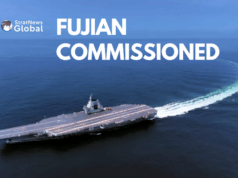In the last few weeks, Chinese naval and coast guard vessels in the South China Sea have harassed and blocked the movement of Philippine ships to Second Thomas Shoal . Chinese ships also fired water cannon on Vietnamese fishermen.
These incidents appeared to be the prelude to Beijing releasing a new 10-Dash Line map last week, where in addition to restating its claims to all of the South China Sea. It also now claimed the island of Taiwan and the island of Borneo divided between Malaysia, Indonesia and Brunei.
Malaysia’s Foreign Minister Zambry Abdul Kadir issued a toughly worded warning to China, “Malaysia does not recognise China’s claims in the South China Sea as outlined in the ‘2023 edition of the standard map of China’ which extends into the Malaysian maritime area. The map has no binding effect on Malaysia.”
Historically Borneo island has been a point of contention between Indonesia, Malaysia, and the Philippines for a very long time. In August 2019, Indonesian President Joko Widodo announced plans to shift the capital from Jakarta to East Kalimantan in Borneo due to its strategic importance in the South China Sea.
Not surprisingly, Indonesia has rejected Beijing’s new map, so too has Brunei and also Vietnam. China’s recent muscle flexing against the Philippines and Vietnam, will add to tensions in the region, the concerns are especially deep given the heavily armed ships that China has deployed in the South China Sea to reinforce its claims.
Malaysia, Indonesia and Vietnam are too small to take on China, add to that their economies (like other ASEAN members) are heavily dependent on trade with China. They are moving to strengthen their navies and deepen cooperation with the US, Japan and other countries. But in the face of China’s power and belligerence, their moves to defend their territories could be too little too late.




